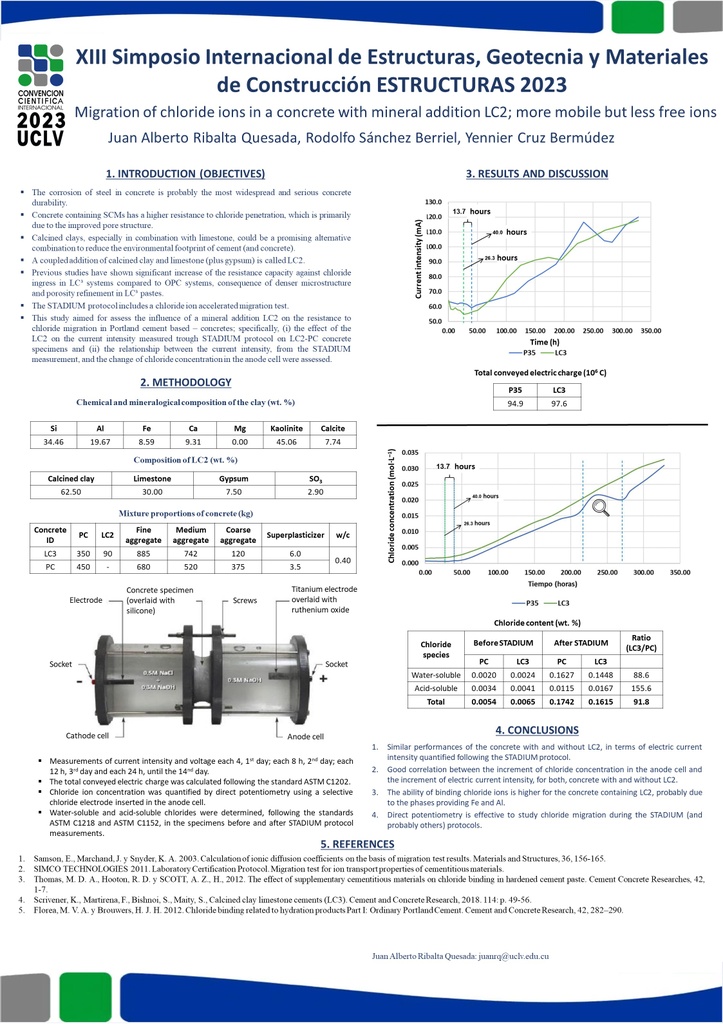Executive Secretary

XIII Simposio Internacional de Estructuras, Geotecnia y Materiales de Construcción
II Taller Internacional de producción y uso sostenible del cemento y el hormigón

En el presente trabajo se evaluó mediante el protocolo STADIUM la influencia de una adición mineral LC2 en la migración de iones clouro en hormigones, para lo cual se preparó un hormigón con cemento portland como aglomerante y otro hormigón en el cual se sustituyó el cemento por 20 % de LC2. Se monitoreó la concentración de iones cloruro en la celda anódica mediante potenciometría directa y se cuantificaron las concentraciones de cloruros solubles en agua y solubles en ácido en ambos hormigones sometidos al protocolo Stadium. Se observó que la intensidad de corriente comenzó a aumentar 13.7 h antes, la corriente eléctrica y la carga total conducida fueron mayores para el hormigón con LC2. La concentración de cloruros comenzó a aumentar 13.7 h antes y su valor fue superior durante todo el ensayo en el especimen con LC2. Finalmente, en el hormigón con LC2 fue mayor la concentración de cloruros solubles en ácido pero menor la concentración de cloruros solubles en agua. Los resultados indicaron que, en este estudio, el hormigón que contenía adición mineral LC2 fue más permeable a iones cloruros pero tuvo más capacidad para enlazar iones cloruro que el hormigón que contenía solo cemento Portland.
In the present work, the influence of an LC2 mineral addition on the migration of chloride ions in concrete was evaluated using the STADIUM protocol, for which a concrete with portland cement was prepared as a binder and another concrete in which the cement was replaced by 20 % of LC2. The concentration of chloride ions in the anodic cell was monitored by direct potentiometry and the concentrations of water-soluble and acid-soluble chlorides were quantified in both concretes subjected to the Stadium protocol. It was observed that the current intensity began to increase 13.7 h before, the electric current and the total load conducted were higher for the concrete with LC2. The chloride concentration began to increase 13.7 h earlier and its value was higher during the entire test in the specimen with LC2. Finally, in the concrete with LC2 the concentration of soluble chlorides in acid was higher but the concentration of chlorides soluble in water was lower. The results indicated that, in this study, the concrete containing LC2 mineral admixture was more permeable to chloride ions but had a greater capacity to bind chloride ions than the concrete containing only Portland cement.
Sobre el ponente

MsC. Juan Alberto Ribalta Quesada

Discussion


